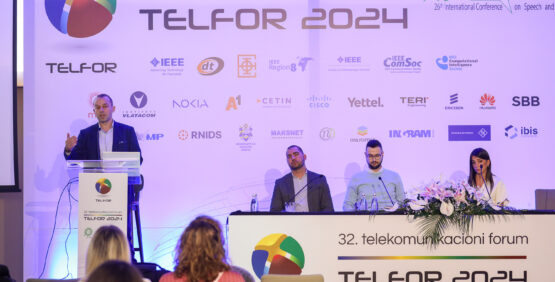
5G Performance: How Fast is Fast?

|
Author: Igor Tomic |
|---|
January 26, 2021
Whenever I think about evolution of mobile communications, a quote by Henry Ford comes to my mind. Once upon a time he said the following: “If I had asked people what they wanted, they would have said faster horses.” Indeed, if you think this through, numerous parallels can be drawn between the car industry and mobile telephony today. What connects them is the continuously growing need for speed, ever-present strong level of innovation, great momentum for both industries today and a massive shift that is underway.
Automotive industry started electrification, and in five years it will look completely different from what it looks like today. Expectations are high, perhaps the best illustration is a quick look into the stock exchange market. Tesla is today worth more than Toyota, Volkswagen, Hyundai, GM and legacy of aforementioned Henry Ford combined. On the other hand, we have reached the moment for commencing the deployment of mobile networks for the fifth generation in mobile communications, better known as 5G. We can perhaps sense even greater expectations, one where intelligent connectivity enabled by 5G is the catalyst for socio-economic growth that the fourth industrial revolution could bring. The new technology promises to supercharge IoT, autonomous vehicles, augmented reality, smart cities, mission-critical manufacturing, 3D videos, remote healthcare and regenerative medicine.
Therefore, after a long period of research and development, technology design and work on standardization, development of 5G deployment strategies, spectrum auctions and network planning, and ongoing network roll-outs lately, we can finally see that 5G networks have come live. According to GSMA, at the moment this article is being written, there are 106 commercial launches across the globe and 7% of world-wide population is being covered by 5G.
We at Aspire are actively supporting 5G deployment projects for Tier 1 and Tier 2 operators in different parts of the world, with major RAN vendors solutions, including Open RAN. Span of our activities is wide: from theoretical to practical considerations, from strategy and design to testing and optimization. Every day we are improving our multi-vendor end-to-end software to support operators journey towards 5G. We are excitedly preparing 5G networks for the victorious race against the benchmarks. The feeling is almost reminiscent of Ken Miles, played exceptionally well by Christian Bale in Ford vs. Ferrari movie, testing and tuning wild Ford GT 40 MK to win legendary 24h Le Man race.
The first impression is that 5G is still an immature technology, with some child-like ailments. But with new releases being launched quarterly, and patches monthly or even weekly, it is growing up rapidly.
Official documentation and product descriptions are still not as rich as we are used to when dealing with older technologies. At this stage engineers are simply not able to find all answers there, while many parameters aimed at algorithm tuning and calibration are still hidden and available only to RAN vendor staff. This is understandable as this is only the early phase that will evolve naturally in coming months. Nevertheless, mobile operators can still do a lot independently. The key for mobile operator at this stage is to conduct proper testing, do comparison of theoretically expected versus empirically measured performance achieved in the field. Deep dives and analysis at this stage foster better dialogue with RAN vendors, speed up learning curve and stretch product performance.
Once 5G roll-out is done, our recommendation is to start first tuning activities with focus on 5G coverage maximization, as radio propagation conditions on typically deployed 3.5 GHz frequency band are more challenging comparing bands used for 3G and LTE. Link budgets in 5G are much more complex, as beamforming gain will change for different radio channels and determination of the most critical channel from coverage perspective is not straight forward and depends on some aspects of RAN deployment as well. Also, worth mentioning is the fact that traditional coverage metrics like signal level (RSRP) may not be the best indicator of coverage in 5G, as correlation with achieved throughput and user experience will depend a lot on many factors, like deployment scenario, type of advanced antenna solution, presence of beam sweeping techniques etc. Nevertheless, our experience from the field is that proper RF design, antenna tilt optimization and EN-DC neighbor relation tuning may significantly improve 5G coverage. One of our recent achievements with Tier 1 vendor in Western Europe is improved probability for user to be served by 5G even by 30% with the very same installed base and without additional investments.
Once optimized coverage is achieved, the next step in our view is to ensure that 5G performance meets expectations to maximal possible extent. During these early 5G deployment days, it is not uncommon to notice that operator who has deployed network with the most spectrum for 5G does not achieve the very best user experience at the same time, which would be expected, especially taking into consideration that all mobile operators today still have very low load on 5G. It is not uncommon to measure very disparate performance on operators with the same vendor and spectrum, even inside the same operator group. Typical reasons for under-performance are in domain of TCP/IP behavior, where requirements for latency and network stability to achieve very high speeds offered by 5G are even more demanding, and securing good E2E network performance may be even more challenging. It may be observed that scheduling activity or PRB allocation is far from maximum, due to E2E problems. But at this stage, and with discussed product immaturity, radio may under-perform as well, with commonly discovered reasons in domain of misconfiguration or RAN features and functionality issues.
Current User experience in terms of down-link throughput speeds has significantly improved, on average typically five times higher in comparison to LTE networks. Improvement brought by 5G networks today, varies from market to market, and spans from double to more than 15 times better in comparison to 4G, depending on deployed networks maturity, spectrum assets, network load etc. When it comes to latency and upload speeds, it is fair to say that at this stage 5G performance is still comparable to LTE. We will probably have to wait for standalone 5G deployments to see the promised few milliseconds network response which is very much needed for some mission critical-use cases and autonomous vehicles. 5G coverage is growing, and time users spend connected on 5G today depends mainly on market maturity and phase of roll-out. It spans from few percent in some European markets like Spain and Italy to more than 20% in developed markets like US, South Korea, Switzerland or some countries in the middle East.
A few words about current status of the different RAN solutions: In the race to launch their products, RAN vendors are prioritizing development of different features and functionalities. In such situations, it may be of great value for mobile operators who are deploying 5G solutions from different RAN vendors to compare performance and benchmark products, enabling Smart CapEx planning with maximized Return on Investment and optimized Total Cost of Ownership. Aspire as vendor independent technology company, with strong expertise and practical experience in the field with both legacy and Open RAN solutions, is ready to support mobile operators with this goal. For more information please contact our experts at solutions@aspiretechnology.com and get the latest on our 5G portfolio and tailored solutions for your specific needs.






